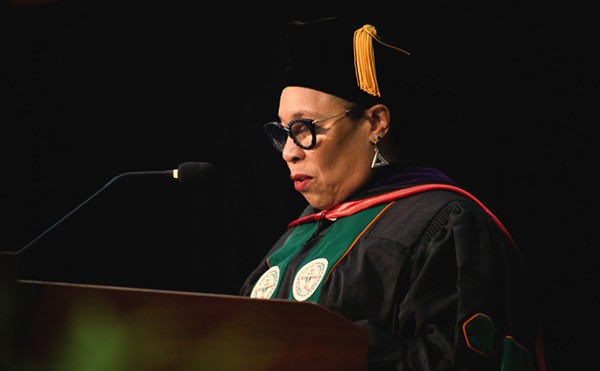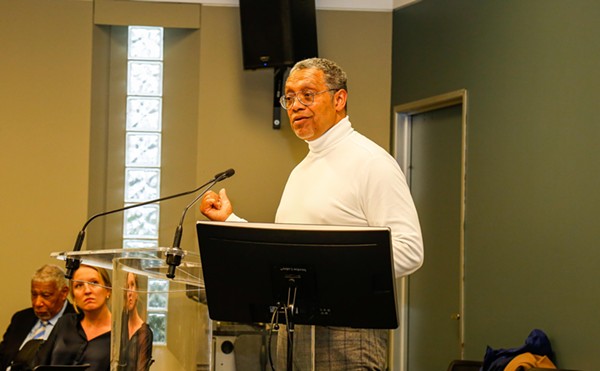
In the wake of Issue 1’s failure, Ohio Gov. Mike DeWine is turning his attention squarely on an abortion rights amendment voters will consider in November. Unlike with Issue 1, DeWine appears much more interested in making a case to voters. The governor insisted the amendment doesn’t square with what he believes the majority of Ohioans want. And he made a plea for civility from those campaigning for and against the proposal.
Issue 1
Earlier this week, Ohio voters handed Republicans a rare and significant defeat. Issue 1, which would’ve required future amendments clear 60% on the ballot and collect a minimum number of signatures in all 88 counties, was rejected by about 57% of voters according to unofficial results.
Some of the proposal’s loudest champions have suggested they’ll try again in the coming years. DeWine argued that would be unwise.
“I think the issue is settled,” DeWine said. “And I think the people spoke — they have spoken. And so I would not look for this to come up in, certainly not in the immediate future.”
While the governor didn’t oppose Issue 1, Ohio’s top Republican also wasn’t crisscrossing the state making the case for it. But he brushed off suggestions that he, or any other current officeholders, would’ve made a difference for the ‘yes’ campaign.
“I’ve learned in 15, 16 campaigns,” DeWine said, “a number of those statewide, and definitely more for statewide office than anybody who’s active in politics today, when you win with that kind of majority, you know, don’t fault the campaign. Don’t fault your strategy. It just wasn’t going to happen.”
Keeping things civil
November’s abortion rights proposal, DeWine argued, is out of step with what most Ohioans want.
Despite describing the ballot measure as “a radical approach,” DeWine warned against overheated rhetoric.
“We need to do this in a civil way,” DeWine said. “We need to do this with great respect for people on the other side of the abortion issue. There are people on both sides who are smart, intelligent, and very good, good people who have very different views about the issue of abortion.”
“We have to respect that,” he said.
For months, though, anti-abortion activists have lobbed dubious claims that November’s proposal would invalidate parental notification laws. In many cases, they’ve tied those arguments not to abortion, but to gender-affirming care. Speaking to reporters after an Issue 1 debate, Secretary of State Frank LaRose claimed “a number of scholars” had come to that interpretation.
“Some believe very clearly that it would allow gender reassignment surgery on children without any parental involvement,” LaRose said. “I think most of us are horrified by that idea, and the fact that that could be in the offing.”
As clinicians have argued in response to anti-trans legislation in Ohio, hospitals do not perform reassignment surgery on minors, and other gender-affirming care requires parental consent.
The amendment itself resembles nothing so much as the standards post-Casey — the 1992 U.S. Supreme Court ruling affirming but modifying Roe v. Wade. As with Casey, the amendment asserts an individual right to an abortion before viability, but grants the state power to regulate abortion after that point so long as there is an exception for the health of the mother.
Abortion policy
DeWine took a long view on the abortion debate. Over and over, he promised that Ohio will find a sort of sweet spot where most people can agree.
“I truly believe we will end up in the state of Ohio with a policy on abortion that is accepted by the majority of the people.” he insisted. “That is ultimately the goal.”
He argued even though people disagree vehemently on abortion itself, there are related issues where both parties can find common ground. DeWine highlighted early childhood education, infant and maternal health, child care and even housing as policy areas where lawmakers could find agreement.
But after arguing previously for tweaks of existing abortion legislation ahead of November, DeWine acknowledged that time has passed. “The only thing that’s in front of us is this constitutional amendment,” he said.
And despite arguing — repeatedly — that he wants Ohio to land on an abortion policy that “the majority” can accept, DeWine didn’t concede that November’s vote will settle that question. Instead he framed it as just one step in an ongoing debate.
“We will get to a point in this state,” DeWine said, “where a majority of people will have an abortion policy that the majority of the people will be able to accept, and will be able to say, yes, that’s okay, I’m comfortable with that.”
“I don’t think we get to that goal with this constitutional amendment,” he added.
Originally published by the Ohio Capital Journal. Republished here with permission.










